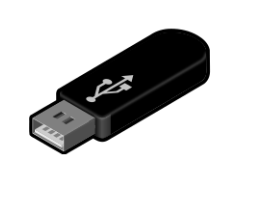Types of Storage
Binary language is used to store information in the computer. In the binary language, 0 and 1 digits are used. The measuring unit computer memory is kilobytes(KB).
The measuring units of computer memory are as follows.
0 or 1 = 1 Bit
8 Bit = 1 Byte
1024 Byte = 1 Kilobytes(KB)
1024 KB = 1 Megabyte (GB)
1024 MB = 1 Gigabyte (GB)
1024 GB = 1 Terabytes (TB)
When you are working on a computer, you save the typed information so that you can get that information later. Which you want later. If you do not save information in the computer, you will not be able to get it later.
You should know where and how this information is saved in a computer.
One of the information features of the computer is its storage capacity.
Information is stored in the computer in two ways.
1. Primary Storage
2. Secondary Storage
Primary Storage
Primary storage is a temporary form. So the information in the primary storage is stored for a while.
The information stored in RAM is temporarily relevant. Eg When the computer is turned off suddenly while working on the computer, the data you typed once you start the computer again is not available. Because that data is stored in RAM. And the data is destroyed if the computer is turned off suddenly. Because RAM temporarily stores information. Therefore, While working on your computer, your data should be saved from time to time.
Secondary Storage
Secondary storage is permanent. This means that information in secondary storage is not destroyed. Some examples of secondary storage are as follows.
1. Hard Disk
A hard disk is an example of secondary storage. This means that the information stored in the hard disk is permanent. While working on a computer, your saved data is saved on the hard disk.
2. Pen Drive
A pen drive is also an example of secondary storage. A per drive is used to move data from one computer to another computer.
3. Optical Disk
Optical discs are also an example of secondary storage. The most commonly used optical discs are as follows.
1. CD
2. DVD
3. Blu Rey
The Three basic formats of the optical discs are as follows.
1. Read Only Memory(ROM):-
The information in this type of C.D. is readable only. You can not change it. Eg. You get movies, songs, and CDs in the market. The data of which you can only read. You can not change it. Such CDs are called C.D. ROM (Read Only Memory).
2. Write Once (R: Recordable):-
You get blank CDs from the market. In which you can record information once. Such CDs are called CD recordable. Once you have recorded the information on this CD, you can not change it.
3. Rewritable(RW):-
C.D. Rewritable are also blank CDs. But we can record information on these CDs again and again. Therefore, such CDs are called CD RW (CD-Rewritable).





Post a Comment